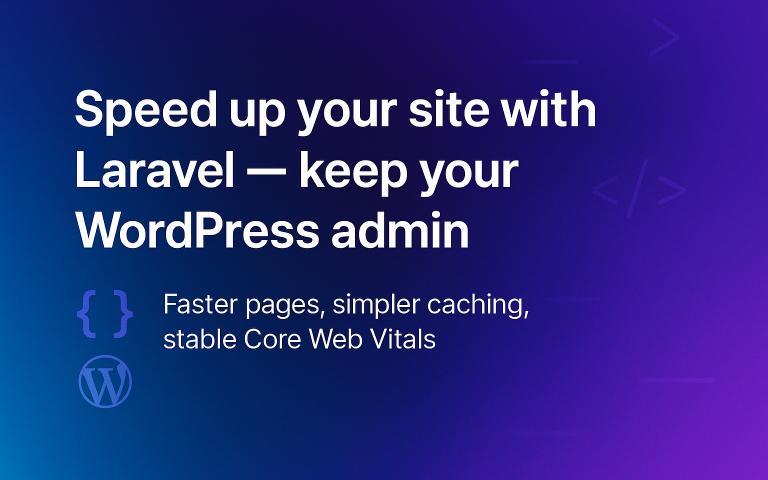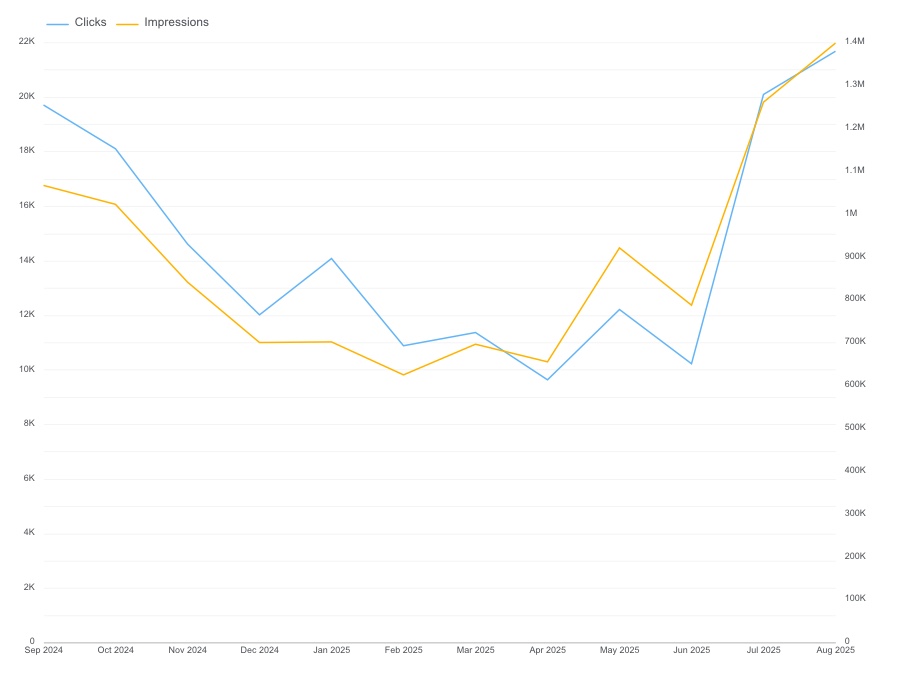Speeding up your website with Laravel — while keeping your WordPress admin
Faster site, same WordPress admin. We moved the storefront to Laravel for speed and stability—simpler caching, reliable forms and CRM, better Core Web Vitals, and improved Google Search results.

In a nutshell. This project started as a busy, content-heavy site that had grown slow and fragile over time. The client’s non-negotiable: do not change the editorial workflow in WordPress. We rebuilt the public “storefront” on Laravel while keeping content and the admin in WordPress — delivering a faster, more stable experience without disrupting the team or SEO.
The challenge and why it mattered
As new plugins piled up and front-end code grew, pages took longer to load and caching became brittle. Forms hesitated before sending, and interactive elements felt heavy — all of which costs conversions. On top of performance pains, we saw traffic declining and Google ranking slipping (fewer clicks/impressions, softer CTR, and a worse average position).
At the same time, the content team relied on WordPress daily and couldn’t afford to relearn tools.
That set a clear goal both business and editorial could rally around: make the site fast and reliable again, restore growth in search, and keep WordPress exactly as it is for editors.
The approach: modern storefront, familiar backend
We moved the public layer to Laravel for speed and stability, while the CMS and content remained in WordPress. Laravel reads from the existing WordPress database through a light integration layer, so editors keep working “as yesterday,” and visitors experience “how much better it is today.”
This architecture preserves URLs and metadata, minimizing SEO risk and avoiding disruption to the team.
What we changed — in plain language
To achieve visible and measurable gains, we focused on improvements that users and search engines feel immediately.
- Leaned out pages. We removed jQuery and redundant scripts. Pages got lighter, visual jitter dropped, and mobile loads felt snappier.
- Made forms dependable. We rebuilt contact forms and added a light integration with Follow Up Boss so leads go straight to the CRM without delay.
- Smoothed discovery. We delivered an interactive map and streamlined browsing (in our case: property listings), so people get to the right items faster.
- Simplified caching. Instead of a fragile full-page cache, we implemented a clear, predictable caching strategy that doesn’t break when content changes.
- Reduced server strain. We cut unnecessary SQL queries and removed repeated calls, so the site stays responsive even in peak hours.
- Kept SEO intact. URLs, metadata, and agreed rules stayed in place. Search engines still “see” the same site — just faster and more stable.
What users felt — and what the business gained
Speed isn’t just a score; it’s fewer early bounces, more pages viewed, and a higher likelihood to submit a form.
The map improves findability, forms deliver leads to the CRM reliably, and support spends less time on firefighting. Meanwhile, editors notice no change at all — WordPress remains the daily workspace.
Proof in numbers
We highlight the release date in all reports so it’s clear where the trend turns.
- PageSpeed today: Mobile — 96/100, Desktop — 95/100
- Core Web Vitals (field): LCP — 2s, INP — 57ms, CLS — 0.06

Why the release was calm
We planned a quiet deployment window, set up monitoring and a rollback path. For editors, the release day looked like any other: the WordPress admin didn’t change. For visitors, pages felt noticeably faster. For sales, leads flowed into Follow Up Boss as expected.
We sped up the site with Laravel while keeping the WordPress admin your team loves. Visitors find what they need faster and convert more often; your team keeps publishing without retraining; and search performance returns to a healthier trajectory — confirmed by the numbers.
Get in touch
Have a project
in mind?
Tell us the context and the outcome you want. We’ll reply within 1 business day with the simplest next step (timeline, rough budget, or quick audit).